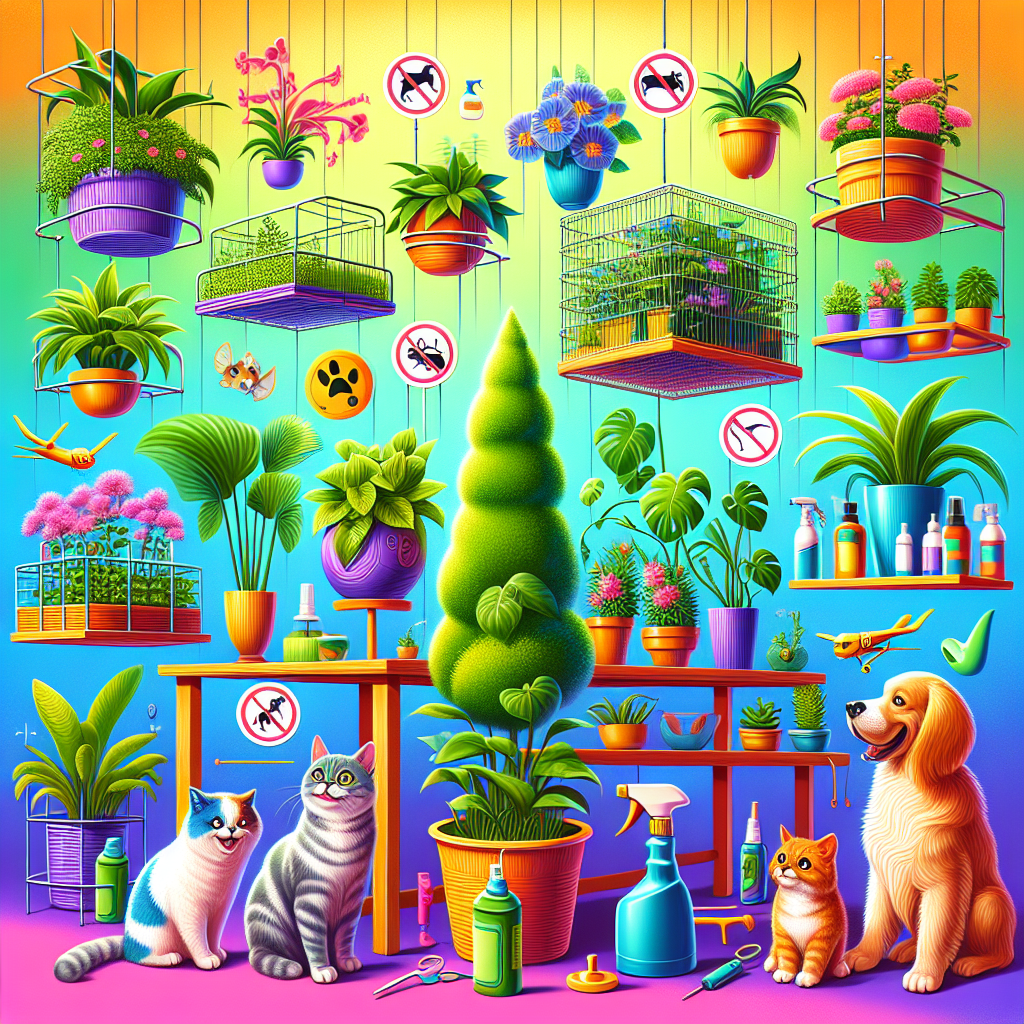Understanding the Risks: Pets and Household Plants
When creating a harmonious living space, it’s essential to consider the safety of both plants and pets. Many common houseplants are toxic to animals, while enthusiastic pets can inadvertently wreak havoc on your green companions. Understanding the risks is the first step to mitigating potential issues.
- Identifying Toxic Plants
Certain houseplants, such as the Pothos, Philodendron, and certain types of lilies, can be harmful to pets. Cats and dogs may experience gastrointestinal distress, or in severe cases, organ failure. Always research plants before bringing them home, checking reliable sources like the ASPCA’s list of toxic and non-toxic plants.
- Choosing Pet-Friendly Plants
Opt for pet-friendly plants that are safe for curious pets. Spider plants, Boston ferns, and certain succulents like “pups” from the aloe vera family are great options. These varieties not only enhance your home’s aesthetic but also ensure a safe environment for your furry friends.
Strategies for Protecting Plants from Pets
Protecting your plants from the eager paws and curious noses of your pets involves adopting a variety of strategies. Here are effective methods:
- Placement Matters
Place plants in locations that are out of reach for your pets. High shelves, hanging planters, and terrariums are excellent ways to keep greenery safe. Consider vertical gardening methods to incorporate plants without risk.
- Creating Barriers
Using decorative plant stands or plant cages can maintain a protective distance between pets and plants. A decorative trellis or a cage-style planter can also add a unique aesthetic to your home while acting as a barrier.
- Utilizing Repellents
Certain scents deter pets from approaching plants. Citrus peels, for instance, can be effective as many cats dislike citrus odors. Commercial pet-safe repellents are also available. Spraying a light mist of diluted vinegar can dissuade pets without harming the plants.
- Training Your Pets
Initiating training sessions to teach pets which areas are off-limits can be beneficial. Positive reinforcement, such as treats for correct behavior, can encourage pets to stay away from plants. Consistency is crucial for this behavioral training to be effective.
- Utilizing Deterrents
Other physical deterrents include placing rocks or pine cones on soil surfaces. The texture is unpleasant for pets, discouraging them from digging in the pots. Also, motion-activated devices can create a harmless spray of air that surprises pets but won’t injure them.
Elevating Plant Resilience
Adding resilience to your plants can help prevent damage when accidents happen.
- Choosing Hardy Plants
Select plants that can withstand minor disturbances. Succulents often have a hardier nature compared to more delicate varieties. These plants can tolerate occasional nibbles or knocks, providing some security against playful pets.
- Regular Maintenance
Keep toxic leaves trimmed and remove any fallen leaves or petals promptly. Regular maintenance decreases the likelihood of pets being attracted to the plant due to decomposing matter.
Engaging with Your Pets
Engagement is key in maintaining a bond between pet ownership and plant care.
- Provide Alternatives
Pets, particularly dogs and cats, often seek stimulation from their environment. Offering safe, engaging alternatives, such as designated scratching posts or chew toys, can redirect their attention from plants.
- Interactive Playtime
Having regular playtime with pets can fulfill their need for stimulation. Engaging them in activities lessens their interest in plants because they find satisfaction in playing.
Monitoring Behavior
The relationship between pets and plants involves careful observation.
- Regular Check-Ins
Conduct routine observations of your pets around plants to identify any behavior changes. Early monitoring can unveil issues before they escalate. For instance, if a pet starts showing heightened interest in a specific plant, address the issue with training or barriers.
- Documenting Reactions
Keeping a log of your pet’s reactions to specific plants provides insight into particularly appealing varieties. Adjust your plant selections based on these observations to cultivate a safe yet vibrant space.
Conclusion: Long-term Care Strategies
Adopting long-term strategies ensures that your living environment remains safe for pets while providing an appealing indoor garden space.
- Educating Guests
Educate visitors about the location of your plants and the precautions to take around them. Informing guests helps prevent accidental disturbances, ensuring a more secure area for both plants and pets.
- Community Resources
Tap into local resources, such as community centers or veterinarian practices, for materials on pet safety around plants. These might include seminars, brochures, or even informal gatherings with other pet owners to exchange tips.
- Consulting Professionals
If you’re unsure about the interactions between your plants and pets, consulting a professional horticulturist or veterinarian can provide clarity. They can offer tailored advice based on your situation and specific plant types.
Summation of Practices
Combining various strategies leads to a harmonious and healthy coexistence between plants and pets. By emphasizing safety, awareness, and engagement, you can create an enriching environment for both your flora and your furry friends.
